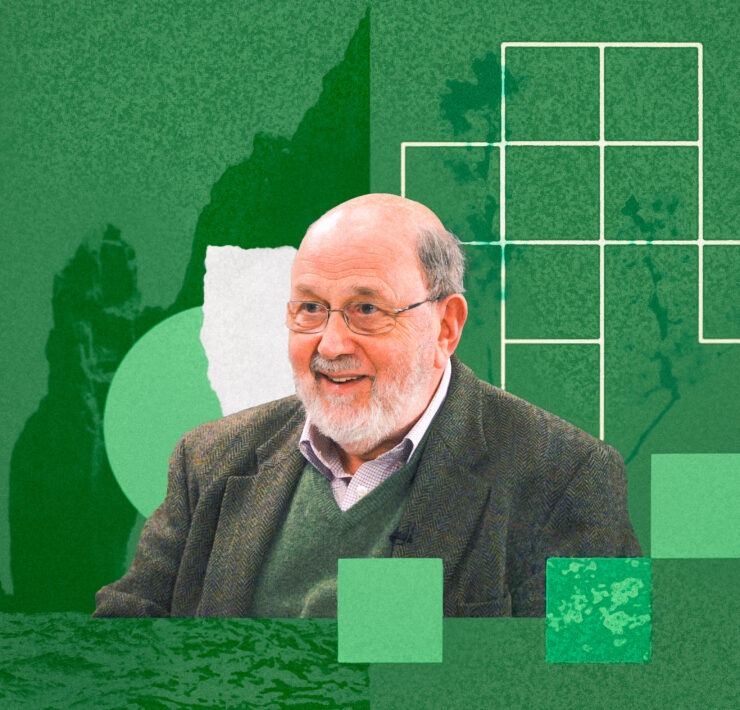I’ve never really been an art museum kind of guy. The reason, I think, goes back to fourth grade.
We were supposed to make a Mother’s Day card by cutting a heart out of construction paper, covering it in glitter and glue, and writing a touching note inside. The room was a flurry of artistic fury and when the glitter settled, most peoples’ projects looked like Mr. Hallmark himself had made them. Mine looked like it was made while listening to an Alanis Morissette album.
Realizing art wasn’t my forte, I followed the “if I’m not good at it then I’ll avoid the sense of failure by choosing not to like it” strategy, and gave up on the arts forever–gave them up, that is, until I discovered the work of Monsieur Claude Monet.
The first time I saw a Monet painting, I mean really saw it, and looked at it, and appreciated it, I knew I was seeing sheer genius. Somehow he saw a fundamental truth no one to that point had–everything visible is moving, because everything visible is light. There is nothing static.
But what impresses me most about Monet is that some of his paintings don’t make any sense up close. From a couple feet away they’re all brushstrokes and blurs and don’t look that impressive. But take a couple steps back and the lines merge and the colors fuse and all of a sudden there’s something beautiful–something that consists, but isn’t encapsulated, by the individual parts.
And I say all of this because I’ve been thinking about atheism lately, and how while in some ways it makes a lot of sense, ultimately I just can’t buy into it.
It seems to me like atheism is at its strongest when it’s viewing the world in individual pieces. In discussions with my atheist friends, they hold up a particular subject, such as the psychology of human development, sociological explanations for religion or circumstantial evidence for evolution, and look at it through a magnifying glass to explain exactly how that piece came into existence, and say “see, no god there!”
And when I look at that individual piece close up, I start to think, well, maybe they’re right! I mean, surely if there’s a scientific explanation than believing in god is kind of, well, not necessary. I start to see everything in life through the microscope thinking what about this? or what about that? Eventually all things become mundane, trivial and definitely not the byproduct of some god out there.
Usually this lasts for a couple minutes, because there’s always a handful of things that make me think I just don’t buy it. And one of them is the lesson I learned from Monet.
I by my very wiring see the bigger picture in nearly everything. Some people are detail people, which is great … I’m just not one of them. And so when I see the world I see complex systems of cells and nerves and systems making a human that is somehow more than a sum of his or her parts. I see humans forming societies and trying to figure out how to live together — oftentimes they do a very bad job of this, but I see them trying. And in their better efforts I see, again, more than just the sum of their parts–I see things like justice, order, beauty, passion and creativity.
I see these things mirroring a universe that has a surprising amount of order to it. I mean, the very fact that we see chaos, disorder, tragedy and evil as exceptions, as perversions of how things should be, speaks that somehow, some way, we know there’s supposed to be something better out there, right? Aren’t most our lives spent chasing down an ideal we’ve never quite seen, but are convinced exists? Even the universe, apparently, drives us toward something that’s more than the sum of its parts.
I’m not saying there’s not a counter-argument for all of this–I know there is. But the arguments I’ve heard all become the equivalent of explaining away the beauty of a Monet painting by saying “see, there’s nothing beautiful about this! It’s just a bunch of brushstrokes thrown on a canvas. The beauty of it is an illusion. Come closer, I’ll explain to you how he did this.”
But the painting is more than a sum of its parts and just because someone knows each brushstroke perfectly, doesn’t mean he understands the painting. It’s in how the parts come together and make something larger, something created, something intentional, that the beauty is found.
That’s the problem with only seeing a Monet from two feet, I think. It would eventually begin to look like a bunch of chaotic nonsense, and not the work of a brilliant creator. And clearly, Monet’s works are the byproduct of a brilliant creator.





















